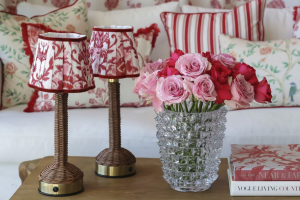Introduction
Suspended ceilings, also known as drop ceilings, have been a common feature of commercial and residential buildings for many years. They are functional and serve many purposes, such as hiding wires, pipes, and ducts, improving sound insulation, and enhancing the overall appearance of a room. However, there are many different alternatives to suspended ceilings that provide similar benefits and can be more visually appealing or cost-effective. In this article, we will explore some of the different options available.
Wooden Ceilings
One alternative to suspended ceilings is a wooden ceiling. This is a classic look that can add warmth and character to any space. Wooden ceilings can be made from a variety of materials, such as reclaimed barn wood, cedar, or pine, and can be finished in a variety of ways, such as staining or painting. Wooden ceilings can be costly, but they are durable and can last for many years.
Pros of Wooden Ceilings
- Visually appealing and adds character to a room
- Durable and long-lasting
- Can be finished in a variety of ways
Cons of Wooden Ceilings
- Can be expensive
- Not ideal for rooms with high humidity or moisture
- May require special installation techniques or contractors
Tin Ceilings
Another alternative to suspended ceilings is tin ceilings, which were popular during the Victorian era and are now making a comeback. Tin ceilings are made from pressed metal panels and come in various designs and patterns, such as floral or geometric shapes. They are relatively easy to install, lightweight, and can be painted to match any decor. Tin ceilings can also be paired with decorative moldings or borders for added elegance.
Pros of Tin Ceilings
- Easy to install
- Lightweight and durable
- Come in a variety of designs and patterns
Cons of Tin Ceilings
- Can be noisy when metal expands or contracts
- May dent or scratch easily
- May require additional insulation for heat and sound
Exposed Ductwork and Pipes
Another alternative to suspended ceilings is to leave the ductwork and pipes exposed. This is a popular option in industrial or rustic settings, where the unfinished look adds a sense of character and authenticity. Exposed ductwork and pipes can be painted or finished in a variety of ways to enhance their appearance.
Pros of Exposed Ductwork and Pipes
- Visually appealing in industrial or rustic settings
- Can be cost-effective
- Easy access for maintenance
Cons of Exposed Ductwork and Pipes
- May not be suitable for all settings or decor styles
- May be noisy due to lack of sound insulation
- May require additional insulation for heat and energy efficiency
Fabric Ceilings
Fabric ceilings are another alternative to suspended ceilings. They consist of a lightweight fabric material stretched taut over a frame or grid system. Fabric ceilings can be custom printed with designs or images, and can come in a range of colors and patterns. They are also relatively easy to install and can be used in many different settings.
Pros of Fabric Ceilings
- Customizable and visually appealing
- Provides acoustic insulation
- Easy to install
Cons of Fabric Ceilings
- May be more difficult to maintain or clean
- May not be suitable for all settings or decor styles
- Need to be properly stretched to avoid sagging or bagging
Conclusion
As we have seen, there are many different alternatives to suspended ceilings that can provide similar benefits and add character and charm to any space. Whether you are looking for a classic or modern look, there is an option to suit your needs and budget. By exploring all of your options, you can create a unique and functional ceiling that will enhance the overall appearance of your room.

